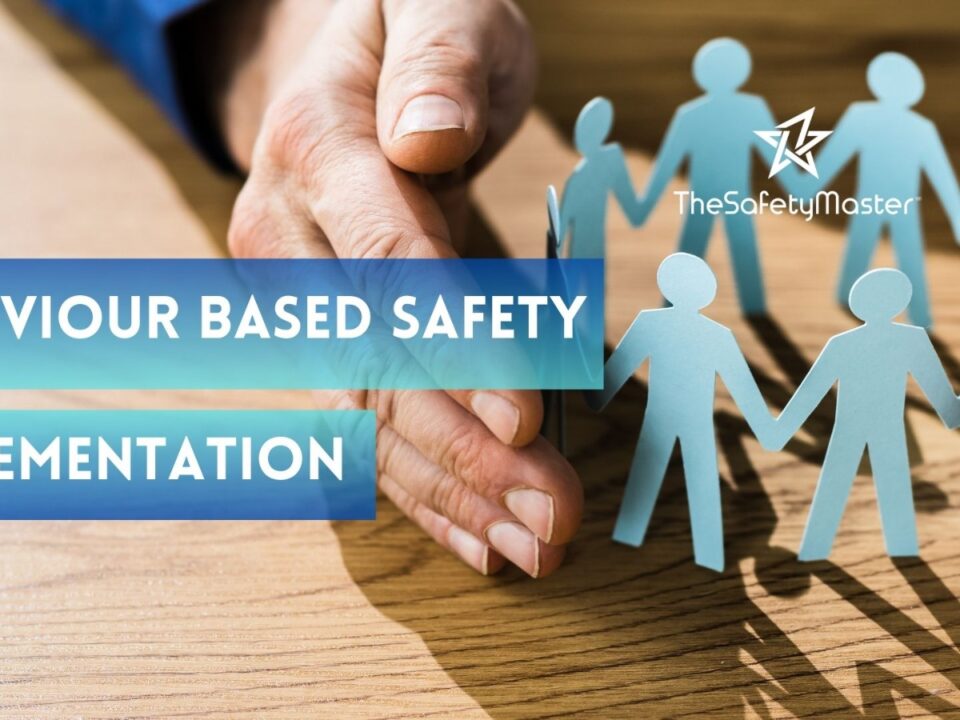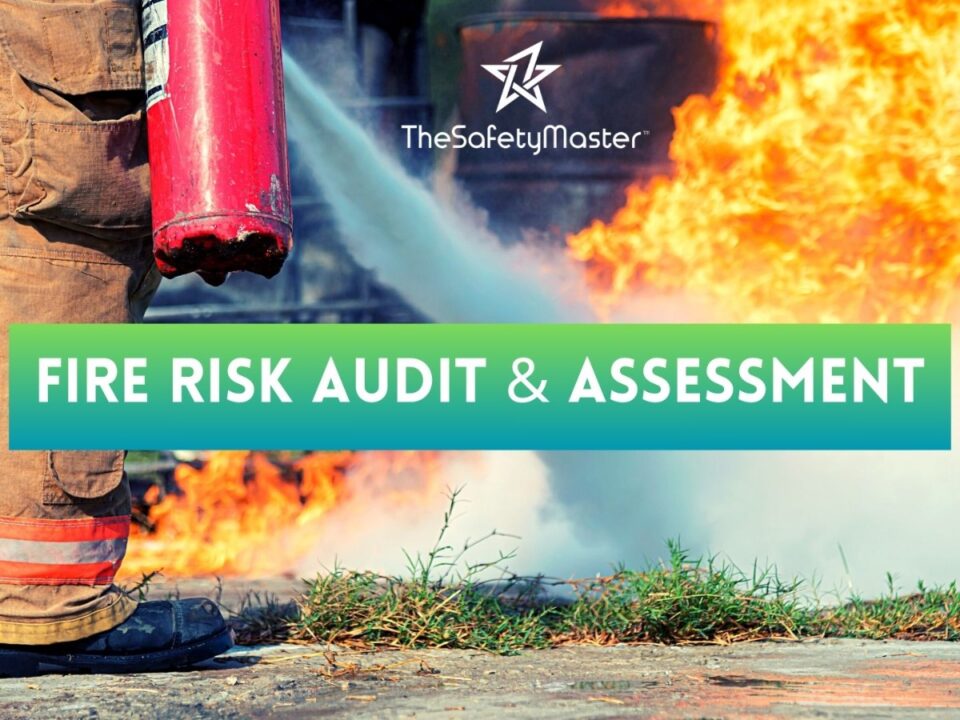The Power of Behavior-Based Safety (BBS) Implementation for Achieving a Transformational Safety Culture in the Workplace

Ensuring Workplace Safety: A Comprehensive Guide to Conducting a BIS14489 Safety Audit
October 19, 2023
Overcoming Challenges: How Quantitative Risk Assessment Improves Risk Management Practices in Indian Process Plants
October 21, 2023In this article, we delve deep into the realm of workplace safety culture and explore a powerful approach that can revolutionize the way organizations perceive and practice safety – Behavior-Based Safety (BBS) Implementation. As safety continues to be a top priority for companies worldwide, it becomes crucial to understand the transformative impact BBS can have on fostering a robust safety culture. We will unveil the key components of BBS and how its systematic approach to identifying and addressing at-risk behaviors can pave the way for a safer and more productive work environment. Get ready to embark on a journey where safety becomes synonymous with success.
Introduction
Every workplace carries inherent risks, and ensuring the safety of employees is a paramount concern for employers. However, traditional approaches to safety management often fall short in creating a truly transformative safety culture. That’s where Behavior-Based Safety (BBS) comes into play, offering an innovative solution that goes beyond mere compliance to drive lasting change. In this article, we will delve into the power of BBS implementation for achieving a transformational safety culture in the workplace. We will explore its key principles, benefits, and challenges while highlighting real-world case studies that demonstrate its effectiveness. By the end of this article, you will gain valuable insights into how BBS can revolutionize your organization’s approach to safety, fostering a work environment where every employee actively contributes to accident prevention and well-being
Understanding Behavior-Based Safety (BBS)
In comprehending the intricate nature of Behavior-Based Safety (BBS), one must delve into its core principles and underlying concepts. BBS is a proactive approach to enhance safety in the workplace by focusing on observable behaviors rather than relying solely on reactive measures. It recognizes that human behavior plays a pivotal role in preventing accidents and creating a culture of safety. At its essence, BBS acknowledges that behavior is not random or arbitrary, but rather influenced by various factors such as individual characteristics, social norms, and organizational culture. By understanding these dynamics, organizations can shape and reinforce positive behaviors while mitigating unsafe practices. BBS operates on the belief that individuals have the capacity to learn and improve their behaviors through continuous feedback, reinforcement, and education.
A crucial aspect of BBS lies in its emphasis on observation and data collection. Companies employ trained observers who meticulously assess work environments to identify at-risk behaviors and potential hazards. This data-driven approach enables organizations to track trends, analyze patterns, and make informed decisions to proactively mitigate risks. By creating a comprehensive understanding of behavioral dynamics within the workplace, organizations can foster an environment conducive to a transformational safety culture where each employee feels empowered to prioritize safety at all times
The Components of a Transformational Safety Culture
The Components of a Transformational Safety Culture: A transformational safety culture encompasses various elements that work in harmony to create a workplace environment where safety becomes ingrained in every aspect of operations. Firstly, it requires a strong commitment from leadership to prioritize safety above all else. This entails fostering an open and transparent communication channel where employees feel comfortable reporting hazards or near misses without fear of retribution. Secondly, a robust safety policy must be established, outlining clear expectations and procedures for maintaining a safe work environment. This policy should promote constant improvement through regular risk assessments and hazard identification.
Furthermore, empowering employees to take an active role in safety is crucial for fostering a transformational safety culture. This involves providing comprehensive training programs that equip individuals with the knowledge and skills necessary to recognize potential risks and implement preventive measures. By encouraging employee engagement through initiatives such as safety committees or suggestion programs, organizations can tap into the collective wisdom of their workforce, creating an inclusive environment where everyone feels responsible for each other’s well-being.
In addition, effective communication plays a pivotal role in building a transformational safety culture. Regularly disseminating information on best practices, lessons learned from incidents, and new safety regulations helps keep employees well-informed and aware of potential hazards. Implementing reporting systems that allow for timely feedback on safety issues ensures that corrective actions can be taken promptly.
By cultivating these integral components within an organization’s fabric, it becomes possible to foster not just compliance with rules and regulations but also instill genuine care for one another’s well-being. In turn, this generates an optimistic outlook among employees who feel confident in their ability to maintain a safe working environment—one where they can thrive both professionally and personally.
The Benefits of Implementing BBS in the Workplace
The Benefits of Implementing BBS in the Workplace: Implementing Behavior-Based Safety (BBS) in the workplace yields a plethora of advantages, transcending traditional safety measures. BBS fosters a culture of proactive risk identification and mitigation, empowering employees to become safety champions. By focusing on behavior as a fundamental aspect of safety, organizations witness lower accident rates, reduced injuries, and improved productivity.
Embracing BBS unlocks a realm where employees feel valued and heard. It encourages open communication channels between workers and management, leading to increased engagement and job satisfaction. This elevated sense of ownership over safety not only enhances individual well-being but also cultivates a collective commitment towards creating an incident-free work environment.
Moreover, implementing BBS results in tangible financial benefits for organizations. The reduction in workplace accidents leads to decreased insurance costs and workers’ compensation claims. By investing in preventative measures such as training programs and hazard identification initiatives, companies can effectively mitigate potential risks while simultaneously reducing expenses associated with injuries or property damage.
In conclusion, embarking on the path of BBS implementation offers multifaceted advantages that extend beyond traditional safety practices. Through cultivating an empowered workforce that values behavioral change, organizations can establish a thriving safety culture that drives productivity while safeguarding the well-being of their most valuable asset – their employees.
Key Principles of Behavior-Based Safety:
BBS is built on a foundation of core principles that guide its successful implementation. The first principle revolves around the idea that behavior is the key driver of safety outcomes in the workplace. By focusing on behaviors rather than just outcomes, BBS recognizes that changing behaviors can lead to long-term safety improvements. This principle encourages employees to take personal responsibility for their actions and empowers them to make safer choices. Another vital principle of BBS is the importance of positive reinforcement. Instead of solely relying on punishment or negative consequences, BBS emphasizes rewarding and recognizing safe behavior. This approach creates a positive and supportive environment, where employees feel motivated to engage in safe practices and are encouraged to continue making safe choices. By reinforcing positive behavior, organizations can foster a culture where safety is celebrated rather than seen as a burden.
Furthermore, BBS promotes continuous learning and improvement as an essential principle. It recognizes that safety is not a one-time fix but an ongoing process that requires consistent evaluation and adaptation. Through regular feedback loops and open communication channels, BBS encourages employees at all levels to share their experiences, suggestions, and concerns related to safety. This principle cultivates a culture of learning from incidents or near misses, enabling organizations to identify potential hazards proactively and implement preventive measures.
By incorporating these key principles into their approach, organizations can effectively harness the power of behavior-based safety for achieving transformational changes in their safety culture. It’s through these principles that individuals become ambassadors for safety within their work environments while also fostering camaraderie among colleagues towards creating safer workplaces collectively
The Role of Leadership in BBS Implementation
Leadership plays a pivotal role in the successful implementation of Behavior-Based Safety (BBS) within an organization. The leaders serve as the driving force behind creating a culture of safety and influencing behavioral change among employees. With their ability to inspire and motivate, effective leaders can foster a sense of personal responsibility for safety, ultimately transforming the workplace into a safer environment. Great leadership involves setting clear expectations and consistently demonstrating commitment to safety. Leaders must actively participate in BBS initiatives, engaging in behavior observations, providing feedback, and reinforcing positive safety practices. By leading by example, they establish trust and credibility, encouraging employees to embrace safety as an integral part of their daily routine.
Moreover, leaders must empower their teams by involving them in decision-making processes related to safety improvements. This collaborative approach not only enhances employee engagement but also promotes ownership over safety outcomes. When leaders invest time and resources into training programs tailored specifically for BBS implementation, they equip their employees with the necessary skills and knowledge to make informed decisions about their own safety.
By prioritizing safety as a core value and embodying it through their actions, leaders create a ripple effect throughout the organization. Employees become more conscious of their behaviors and begin to adopt safer practices both on and off the job. Ultimately, strong leadership serves as the catalyst for cultivating a transformational safety culture that permeates every aspect of an organization’s operations.
Remember: Leadership is not just about managing tasks; it is about inspiring individuals to reach new heights while keeping them safe along the way.
Developing a Behavior-Based Safety Program
Developing a Behavior-Based Safety Program: Creating a comprehensive behavior-based safety program requires careful planning, collaboration, and attention to detail. It begins with conducting a thorough assessment of the current workplace culture and identifying areas that need improvement. This assessment can be done through surveys, interviews, and observations.
Next, establish clear goals and objectives for the program. Define what behaviors you want to promote and reinforce among employees to enhance safety culture. For example, encouraging open communication about hazards or rewarding proactive measures taken to prevent accidents.
Once the goals are set, develop specific strategies and interventions tailored to your organization’s needs. This may involve implementing safety observation programs where employees report unsafe behaviors or conditions they witness in real-time. Additionally, consider providing training sessions on hazard identification and risk assessment techniques.
To ensure long-term success, it is crucial to involve employees at all levels in the development process. Seek their input during program design workshops or through suggestion boxes to foster a sense of ownership and increase engagement.
Remember that a behavior-based safety program is not static; it should continuously evolve based on feedback from employees and evaluation of its effectiveness. Regularly assess the program’s impact by analyzing incident rates, near misses reported, or changes in safety-related attitudes among employees.
By investing time and effort into developing a robust behavior-based safety program, organizations can cultivate a positive safety culture where every employee feels responsible for their own well-being as well as the well-being of their colleagues—a true testament to the power of BBS implementation in achieving transformational change.
Training and Education for Behavior-Based Safety
Training and Education for Behavior-Based Safety: In order to successfully implement Behavior-Based Safety (BBS) in the workplace, comprehensive training and education programs are crucial. Employees should be equipped with the necessary knowledge and skills to identify unsafe behaviors, understand their consequences, and make informed decisions to mitigate risks. Training sessions can include interactive workshops, role-playing scenarios, and real-life case studies to foster a deep understanding of BBS principles.
Furthermore, education should not be limited to frontline workers but should extend to all levels of the organization. Managers and supervisors play a pivotal role in reinforcing safety practices and promoting a culture of accountability. They should receive specialized training that focuses on effective communication techniques, coaching strategies, and fostering trust within teams. By empowering leaders with these skills, they can better support employees in embracing BBS as an integral part of their daily work routines.
A thought-provoking aspect is the potential for continuous learning within a behavior-based safety program. Organizations can establish regular refresher courses or provide access to online resources that keep employees updated on emerging best practices in workplace safety. This approach ensures that BBS remains a dynamic process that evolves alongside industry standards and challenges. By investing in ongoing training and education, organizations demonstrate their commitment to safeguarding their workforce while fostering a sense of professional growth among employees.
Remember: In the realm of behavior-based safety training, learning is not merely an event but rather an ongoing journey towards cultivating a culture where every individual prioritizes safety as an integral part of their daily routine.
Measuring the Effectiveness of BBS
Measuring the Effectiveness of BBS: To truly gauge the effectiveness of Behavior-Based Safety (BBS) implementation, organizations need to embrace a comprehensive measurement approach that goes beyond simple incident rates. Evaluating the impact of BBS requires a multifaceted approach, encompassing both quantitative and qualitative methods.
Quantitative measurements involve analyzing data such as accident/incident rates, near-miss reports, and safety observation cards. These metrics provide valuable insights into the frequency and severity of incidents within an organization. However, it is important not to solely rely on these numbers as they only tell part of the story.
Qualitative assessments delve deeper into the underlying attitudes, beliefs, and behaviors relating to safety in the workplace. Surveys, interviews, and focus groups can help gather employee perspectives on safety culture improvement after BBS implementation. This not only provides a more holistic view but also allows companies to identify areas for further enhancement.
By measuring both quantitative and qualitative aspects of BBS effectiveness, organizations gain a more accurate understanding of how well their programs are driving positive change. It enables them to celebrate progress made while identifying opportunities for continuous improvement. Remember that evaluating effectiveness is an ongoing process; it encourages a proactive mindset focused on constant growth and reinforcement in creating a safer work environment.
Overcoming Challenges in BBS Implementation
Overcoming Challenges in BBS Implementation: Navigating the treacherous waters of Behavior-Based Safety (BBS) implementation can be akin to maneuvering through an intricate labyrinth. One significant challenge lies in garnering full employee participation and commitment. It requires a delicate balance of encouragement, persuasion, and fostering a sense of ownership within each individual. Like tending to a blossoming garden, leaders must tend to the seeds of motivation and cultivate an environment where engagement flourishes.
Another hurdle in BBS implementation is ensuring consistent adherence to the newly established safety protocols. Human beings are creatures of habit, often resistant to change. Therefore, it becomes imperative to instill in employees a deep understanding of why these changes are vital and how they contribute not only to their personal well-being but also to the overall success of the organization. By providing ongoing training and education, empowering individuals with knowledge, and reinforcing positive behaviors through recognition and incentives, we pave the way for lasting transformation.
Furthermore, organizational culture can pose as a formidable obstacle when implementing BBS. Resistance may emerge from deep-rooted beliefs or engrained patterns that hinder progress towards a safer work environment. By fostering open lines of communication, encouraging transparency and accountability at all levels, we can dismantle resistance brick by brick until safety becomes an integral part of our collective DNA
Case Studies: Successful BBS Implementation
Striding through the annals of industrial success, there lie remarkable case studies that illuminate the triumph of Behavior-Based Safety (BBS) implementation. One such instance hails from a bustling automobile manufacturing plant in the heart of a prospering city. The management, attuned to the potential of BBS, launched a comprehensive program tailored to their specific needs. By fostering open communication and providing regular coaching sessions, they witnessed an unparalleled surge in employee engagement, resulting in reduced accident rates and heightened safety consciousness throughout the facility. This anecdote underscores how BBS integration can truly revolutionize workplace safety. In another tale of triumphant transformation, we find ourselves amidst a sprawling oil refinery nestled near azure shores. Here, a determined team recognized the power of BBS as an instrument for change. Armed with meticulous planning and unwavering commitment, they embarked on this journey towards enhanced safety culture. By instilling behavioral observation techniques and empowering employees to take ownership for their actions, this refinery saw a remarkable decrease in incidents over time – proof that when organizations embrace BBS as a guiding principle, they can manifest positive change beyond imagination.
Let us now traverse into the realm of healthcare where miracles are often witnessed. In one prestigious hospital, an enlightened administration turned to BBS to safeguard their cherished caregivers and patients alike. They successfully implemented targeted interventions by identifying risky behaviors and prescribing corrective measures through personalized feedback sessions. As the echoes of empowerment reverberated through corridors once fraught with uncertainty, staff morale soared while accidents plummeted with breathtaking rapidity. This stirring example beckons us to consider how fostering a culture rooted in behavioral awareness can be nothing short of transformative
Conclusion
In conclusion, the implementation of Behavior-Based Safety (BBS) in the workplace holds immense potential for achieving a transformational safety culture. By focusing on understanding and modifying employee behavior, BBS allows organizations to create an environment where safety is ingrained in every action and decision. While challenges may arise during implementation, such as resistance to change or lack of leadership support, perseverance and dedication can overcome these obstacles. As organizations embrace BBS and witness its positive impact on employee well-being and productivity, they embark on a journey toward a safer future, fostering a sense of collective responsibility that leaves every worker feeling empowered and valued. Let us embrace the power of behavior-based safety as a catalyst for change and forge ahead into a brighter tomorrow, where workplaces thrive with utmost safety at their core.




